The 11 British interior design styles you are going to want to bring into your home – no matter which side of the pond you live on
Interior designers share their favorite British design trends and how to recreate them in your own home
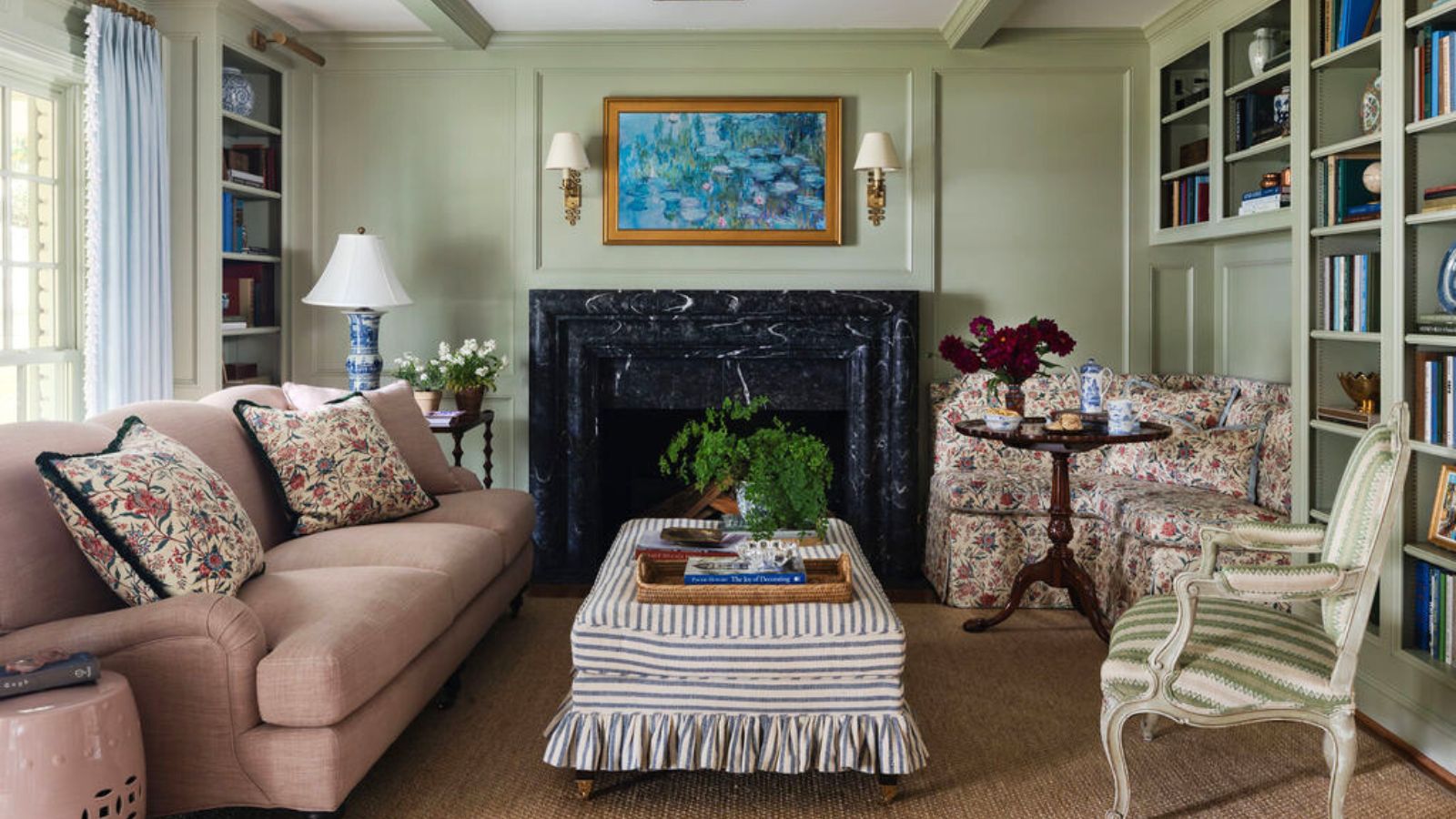
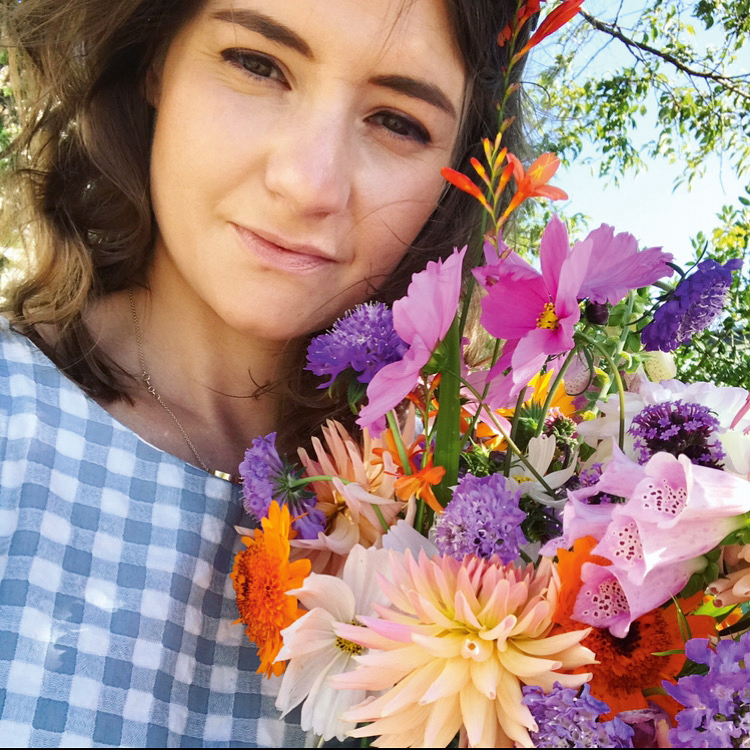
British interior styles and trends have long been a source of inspiration for designers across the globe, and have had a big impact on interior design over the centuries. From Regency townhouses to country cottages and Midcentury Modern homes, Britain boasts a wealth of beautiful, distinctive properties decorated in myriad styles which continue to be referenced and reimagined by today's designers.
Alongside its impressive architectural heritage, Great Britain also has a rich tradition of furniture, fabric, and wallpaper manufacture, and is the birthplace of many iconic brands whose designs have endured across the centuries. Many of these brands, such as Morris & Co, Sanderson, Ercol, GP & J Baker and Liberty, are still in business today and operate on the same founding principles of exceptional craftsmanship as when they were first founded.
But what is it that interior designers love about British style and what particular British trends are captivating designers? To help answer this question, we reached out to the experts to find out what British interior design trends they love and how they use them to create that quintessential British look. From traditional Georgian joinery and heritage paint colors to chintzy florals, these British interior design trends are guaranteed to inspire.
11 British interior design trends to inspire
1. Elegant English country style
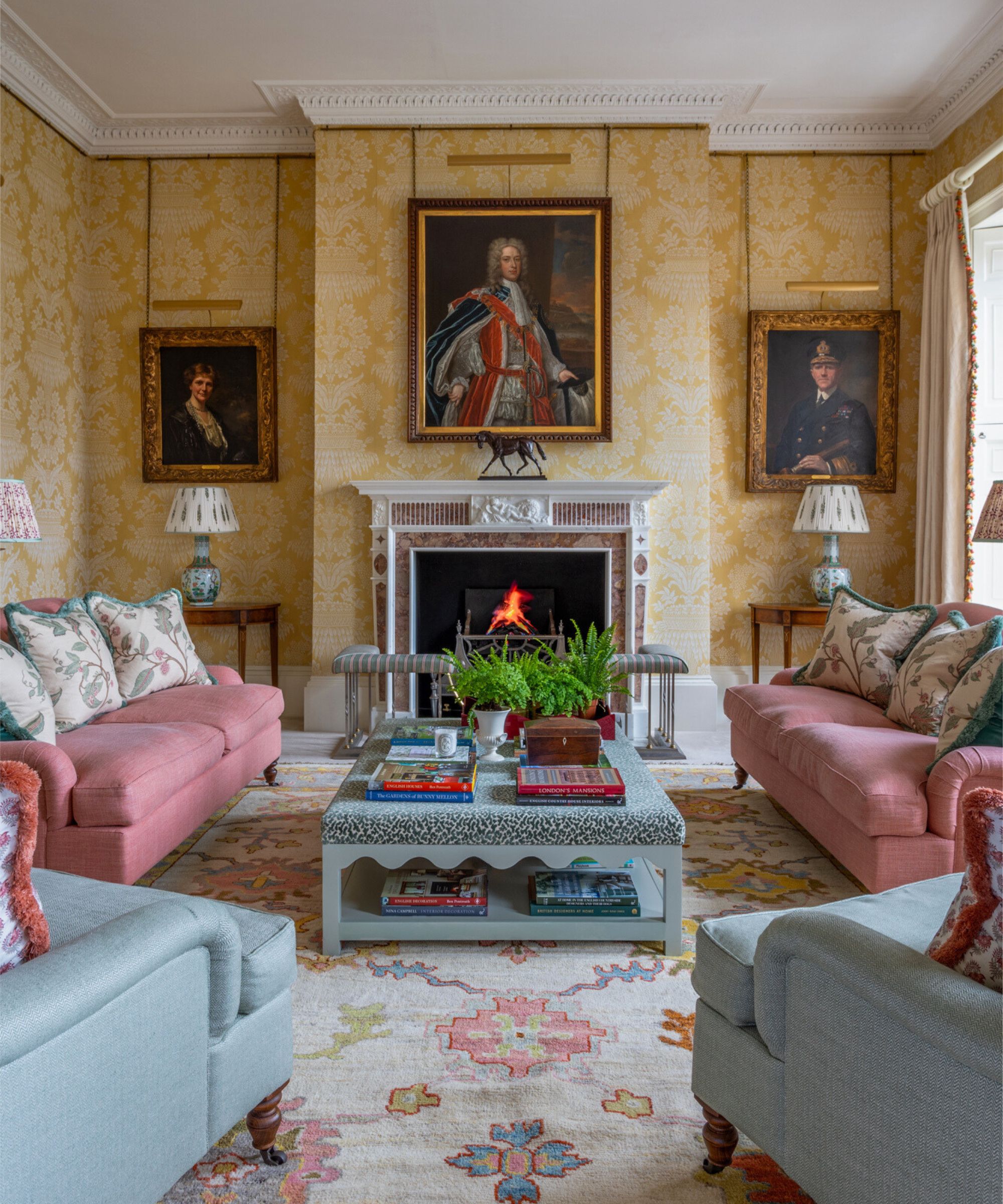
Known for his timeless yet playful interiors, Sean Symington often takes inspiration from the always-on-trend British country style. ‘I'm often drawn to quintessentially British design elements that celebrate the country's rich decorative history while feeling fresh and relevant today,’ says Sean Symington. ‘The English country house aesthetic is a constant influence – not in a literal sense, but in its eclectic approach to layering periods, patterns, and collected treasures. There's something wonderfully unpretentious yet refined about traditional British interiors that I love to reference.’
Interior designer Meg McSherry is also drawn to the relaxed yet eclectic feel of British country interiors. ‘To us, British design inherently means cozy, layered, and charming spaces. We are excited that clients are allowing us to embrace this style more, as it means there is no shortage of color or pattern in one room,’ says Meg.
‘Yes, we still need to be mindful to make sure it doesn't get out of hand, but in a sense, the more mismatched the furniture is, the more unexpected the pattern combinations are, the better. This is not the time to be shy or hold back! We are reaching for British vendors such as Soane, Robert Kime and Penny Morrison to help achieve this look, plus rattan furniture and naturally, antiques as well.’
2. Expertly layering pattern
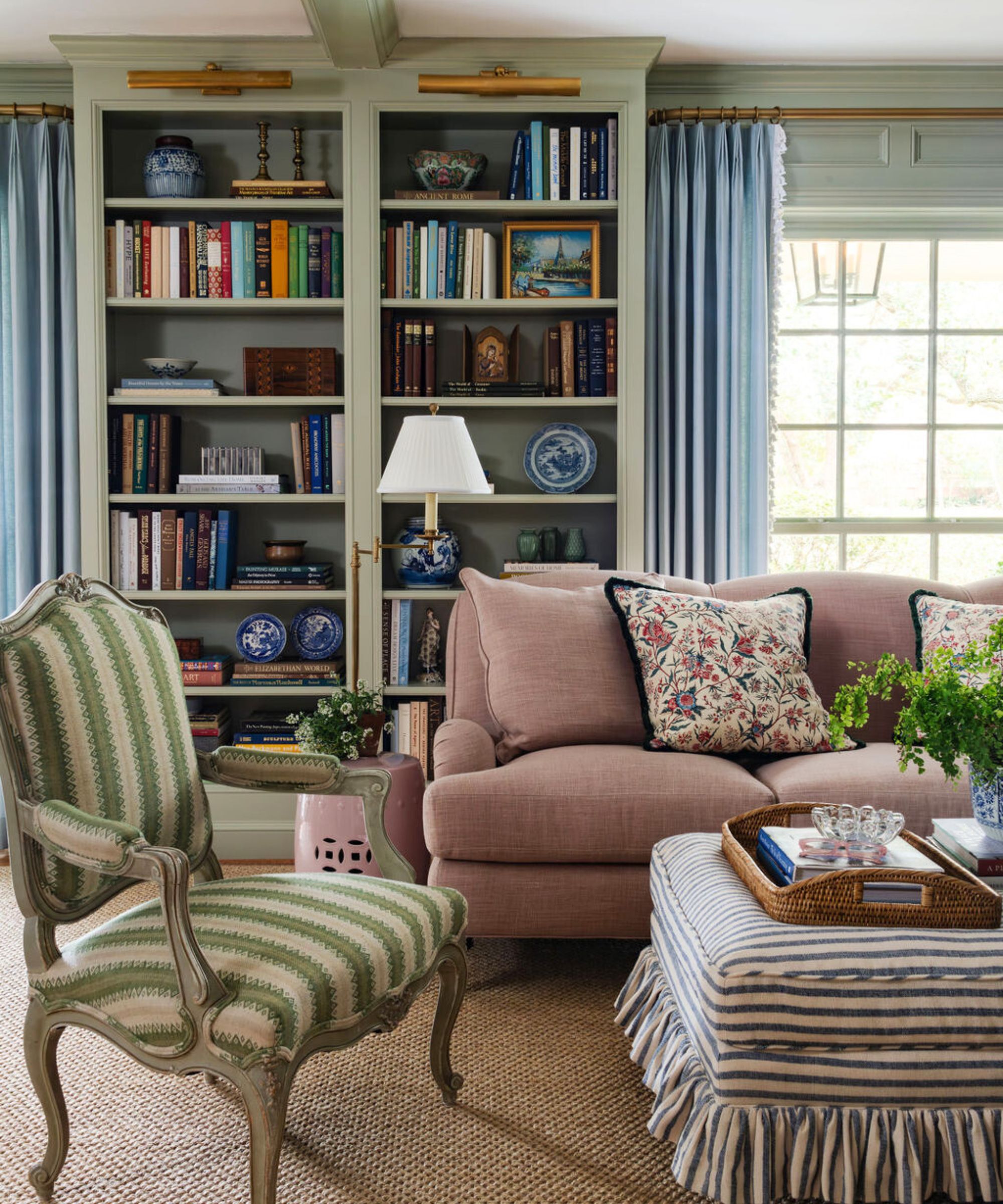
When we asked interior designers what inspired them about British interiors, the layering of fabrics and color cropped up again and again, and this sitting room by Houston-based designer Katie Davis is a perfect example of the look.
‘Here we layered florals and stripes and neutrals to allow your eye to move and the floor-to-ceiling books add to the cozy feeling,’ explains Katie. ‘Soane's Karun Thakar fabric was our hero fabric, as seen on the banquette. It ties in all the colors of the room and drives home the British country vibe we were going for.’
Alongside the mix of florals, stripes and textured plains, Katie chose traditional style furnishings, including a Howard-style sofa, a skirted ottoman and a skirted banquette, all of which lean into the British country look.
‘The furniture in the space was chosen based on function - what the client needed (a workspace for him and her, a game table, a sitting room); we selected a banquette as a more intimate seating area to enjoy breakfast or a cup of coffee,’ adds Katie Davis. ‘The skirted furniture was for the woman of the house, who wanted feminine touches; she loves pattern. The striped Guy Goodfellow fabric on the ottoman is quintessentially British and brings a casual feel to the formal space.'
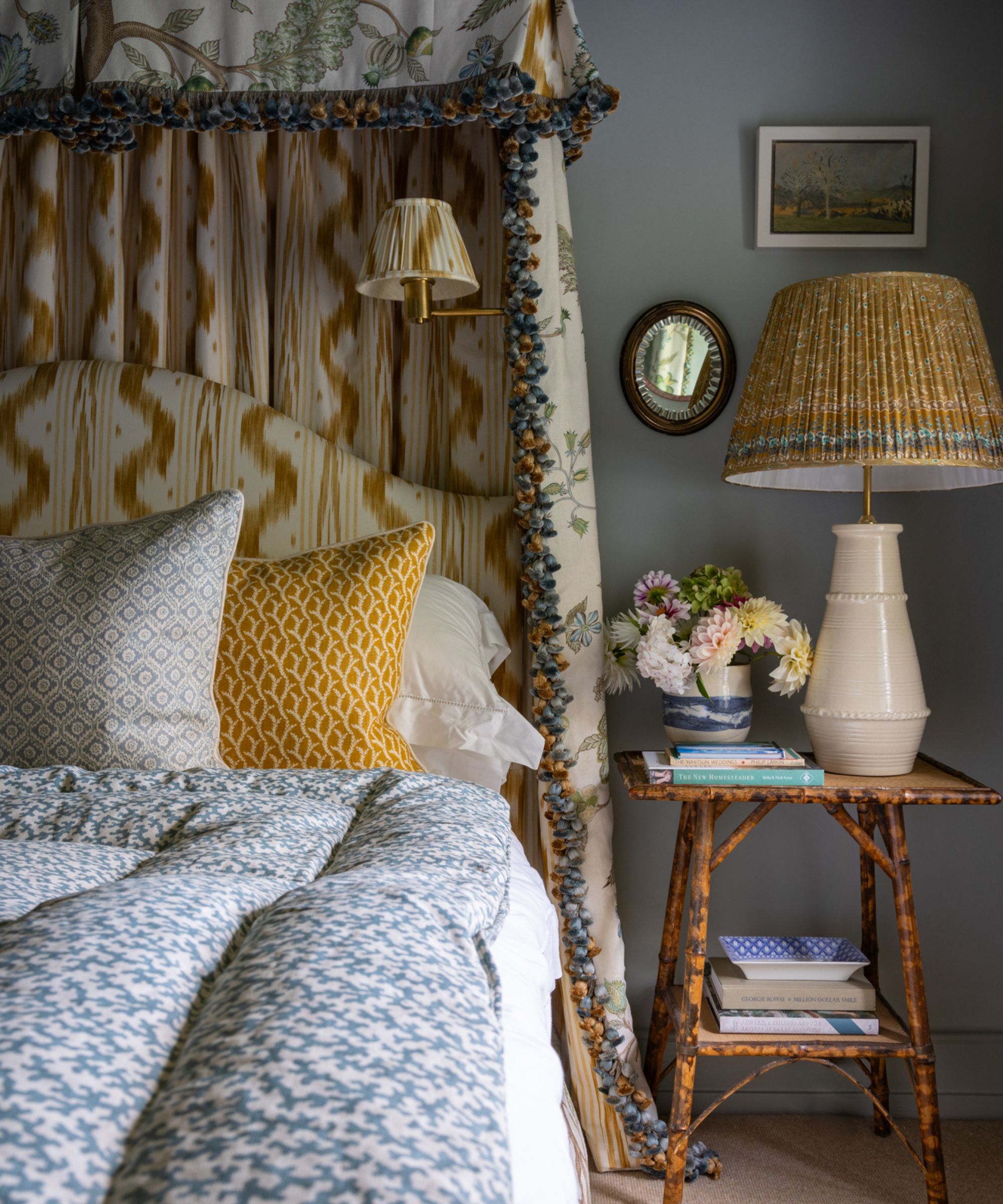
‘Layering is key to creating a cohesive and inviting interior, especially for a country look. Layered textures and textiles soften the presence of antique case goods, allowing their patina and story to shine while contributing warmth and depth to the overall scheme,’ adds Sean Symington.
When it comes to sourcing fabrics for his projects, he turns to many British fabric and wallpaper brands, including GP&J Baker, Mollie Mahon, Linwood, Lisa Fine Textiles, Octavia Dickinson, Guy Goodfellow, Robert Kime, Colefax & Fowler, Soane and Bennison Fabrics.
3. Chintzy florals
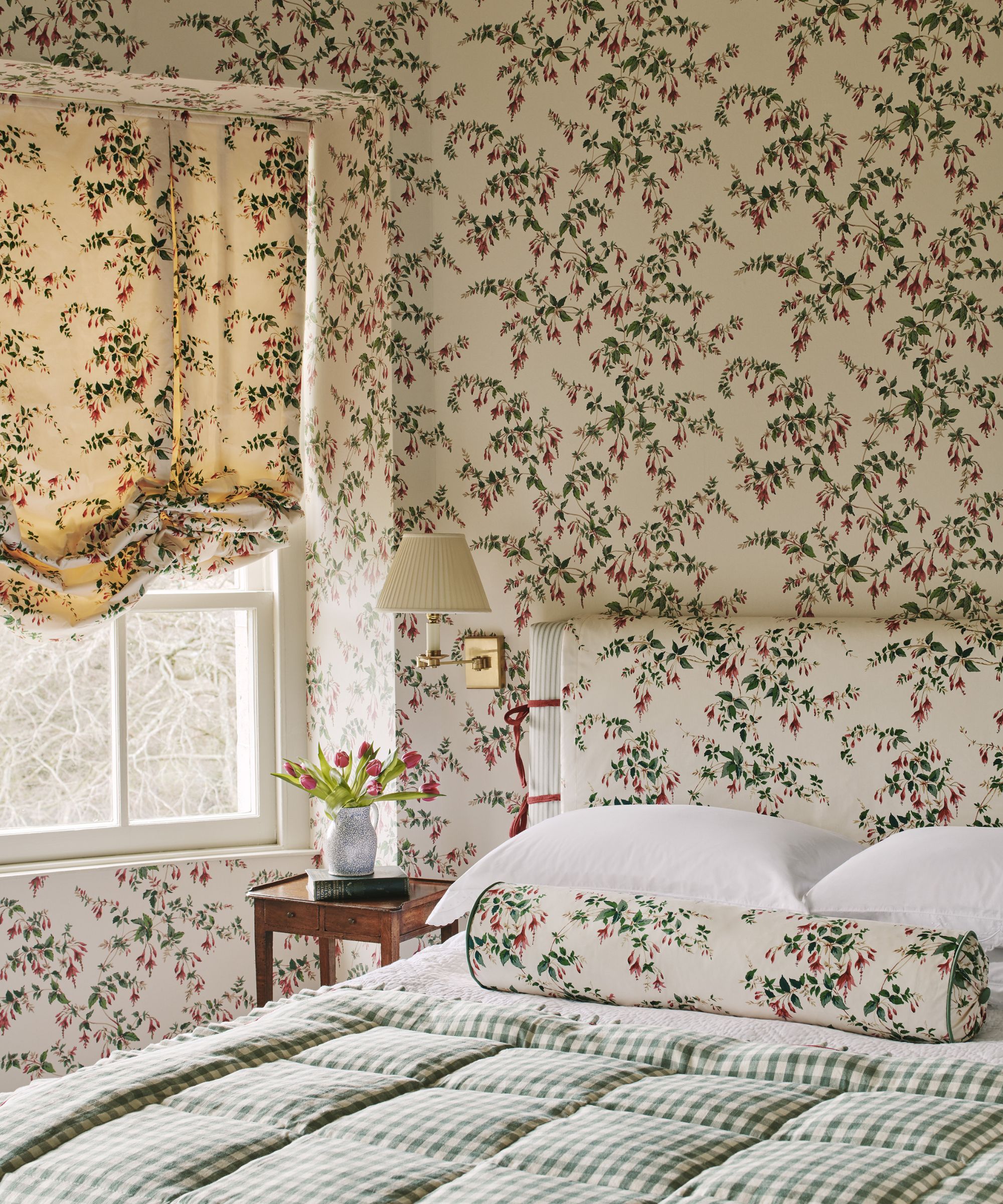
Characterised by their flamboyant, blousy blooms, Chintzy florals are a hallmark of the British country look and are currently having a revival. Historically, the term chintz was used to describe brightly colored glazed cotton textiles printed in India for the European market in the 17th-18th century, but over the years the term has evolved and chintz is now used as a more general term to describe exuberant, romantic floral prints. Used in abundance, they can feel dated, but get it right and they are guaranteed to bring timeless elegance.
‘There’s a renewed appreciation for English chintz, with a fresh approach to pattern and scale. Playful yet refined, this revival is a nod to the layered interiors of historic British country houses, reinterpreted for today, explains Lauren Gilberthorpe.
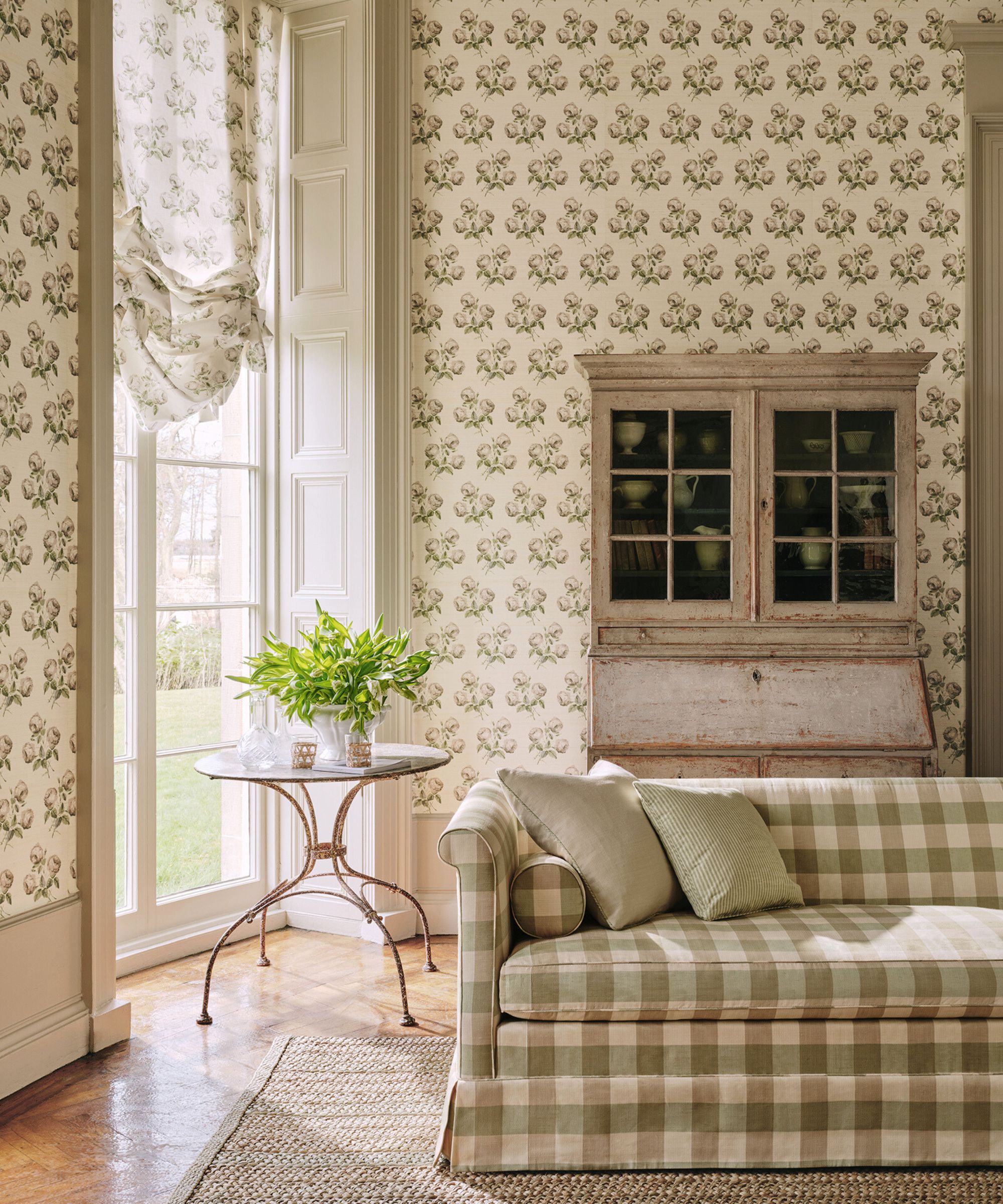
Synonymous with British country interiors, British brand Colefax & Fowler, founded in the 1930s, have a wealth of floral designs that are enduringly popular with interior designers.
'We are seeing a resurgence of our floral styles; chintzy florals are being embraced again but with a cleaner look,' adds James Eden, head of marketing at Colefax & Fowler. 'We have never styled away from these designs, even when they were less en vogue.'
Our Bowood print is incredibly popular, an enduring design; we've now launched it as a printed sisal wallcovering, giving this traditional style a fresh, modern appeal.'
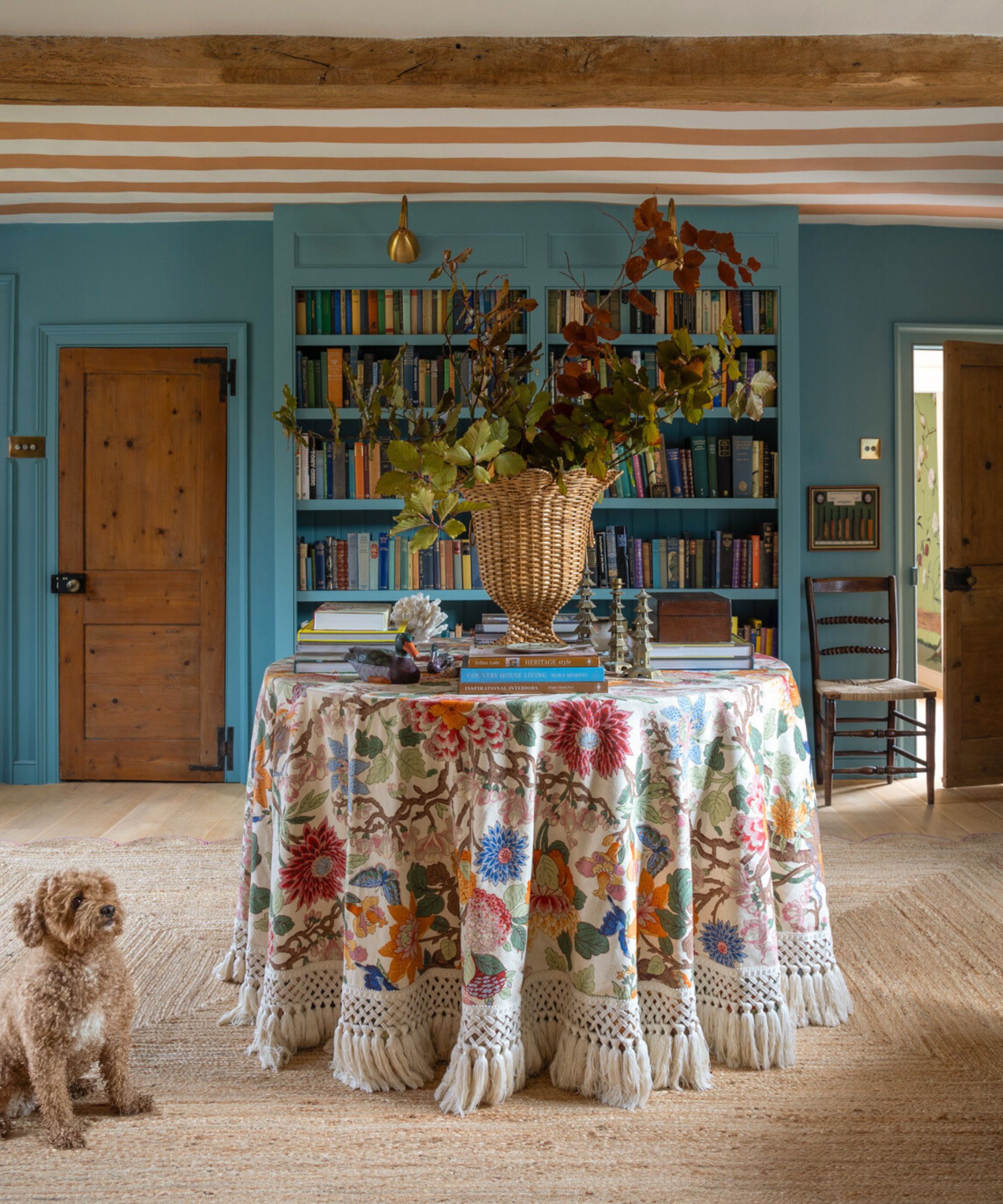
Though not a classic chintz, GP&J Baker’s iconic Magnolia fabric is an iconic British design which interior designers return to again and again. Originally painted by textile designer William Turner in 1913 it is one of GP & J Baker’s best-selling designs.
‘It's one of our favorite fabrics that I find myself returning to from city projects to country homes. It's incredibly versatile and has a punchy color palette where you can pull so many different colors from it,’ explains Sean Symington, who has used it here in this beautiful entryway. ‘It's remarkable how this fabric can look completely different depending on the scheme and environment it's in. Against moody dark walls, this fabric can pull out its rich browns for a more sophisticated, dramatic effect. It functions beautifully as a traditional print in a fresh country cottage setting and equally, it works wonderfully in an elegant London townhouse with beautiful light, where it can bring the outside in with its pattern and punchy colors. The pattern has this timeless quality while the colors give it that contemporary edge.’
4. Traditional Georgian-style joinery
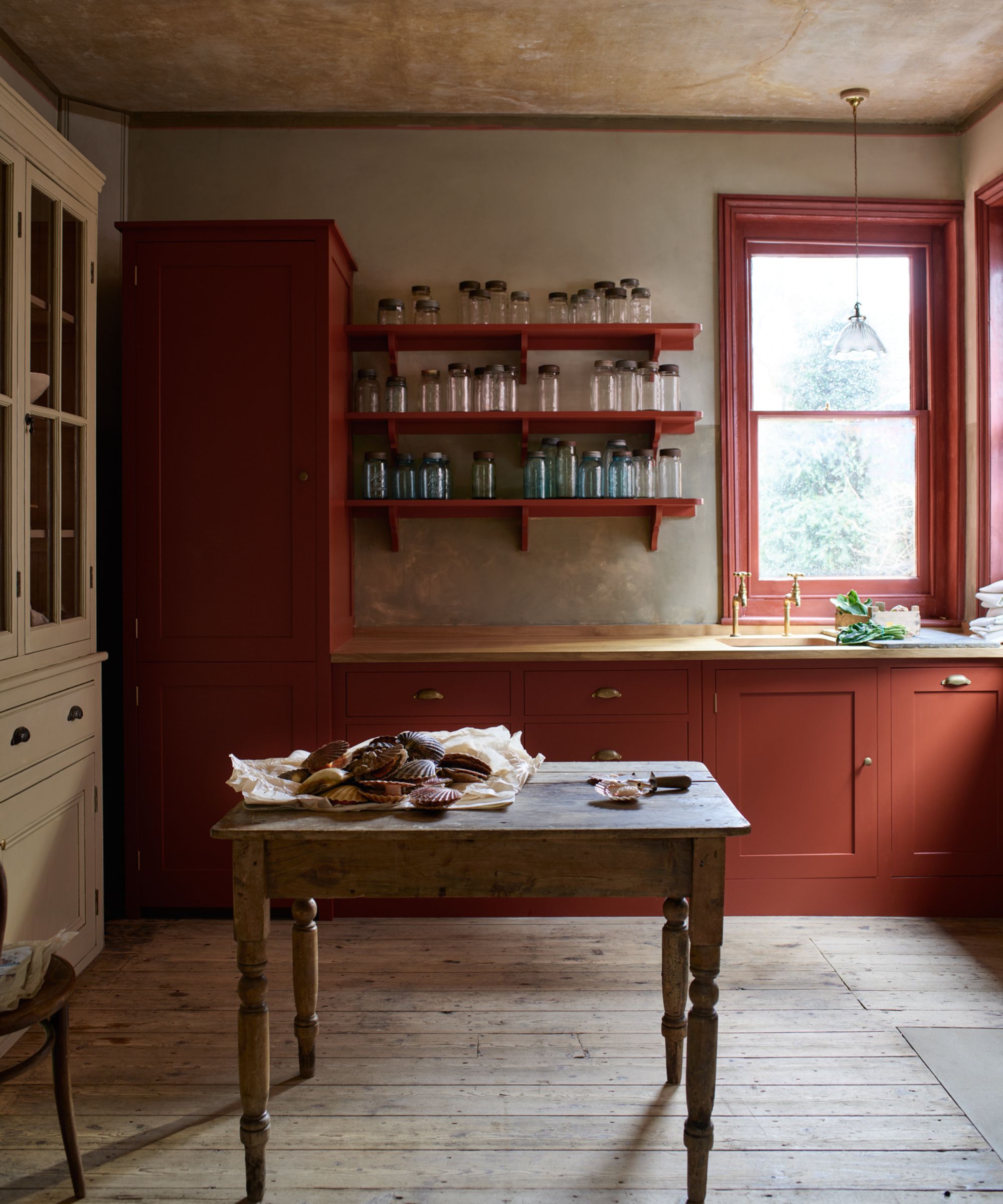
Great Britain has a rich heritage of joinery and craftsmanship and there are plenty of authentic examples of traditional fitted cabinetry still in situ today, particularly ‘under the stairs’ in the service quarters of grand Georgian buildings. Beautifully proportioned and made with time-honoured techniques, this style of utilitarian joinery has captivated interior designers and homeowners in recent years, with many seeking to emulate the heritage style in their kitchens. Specialist in bespoke cabinetry, the British kitchen company Plain English prides itself in its high quality, traditional kitchens which reference the aesthetics and craftsmanship of the past
‘Plain English joinery is inspired by the simplified system of details and proportion that was applied by Georgian builders to the below stairs and 'behind the scenes' areas of grand houses. Where the grand 'upstairs' interiors now look dated with their overt classical references, the simplified 'downstairs' system retains the harmonious, human-centred proportions and is adaptable enough to still feel fresh and modern today,’ explains Merlin Wright, design director.
5. William Morris prints
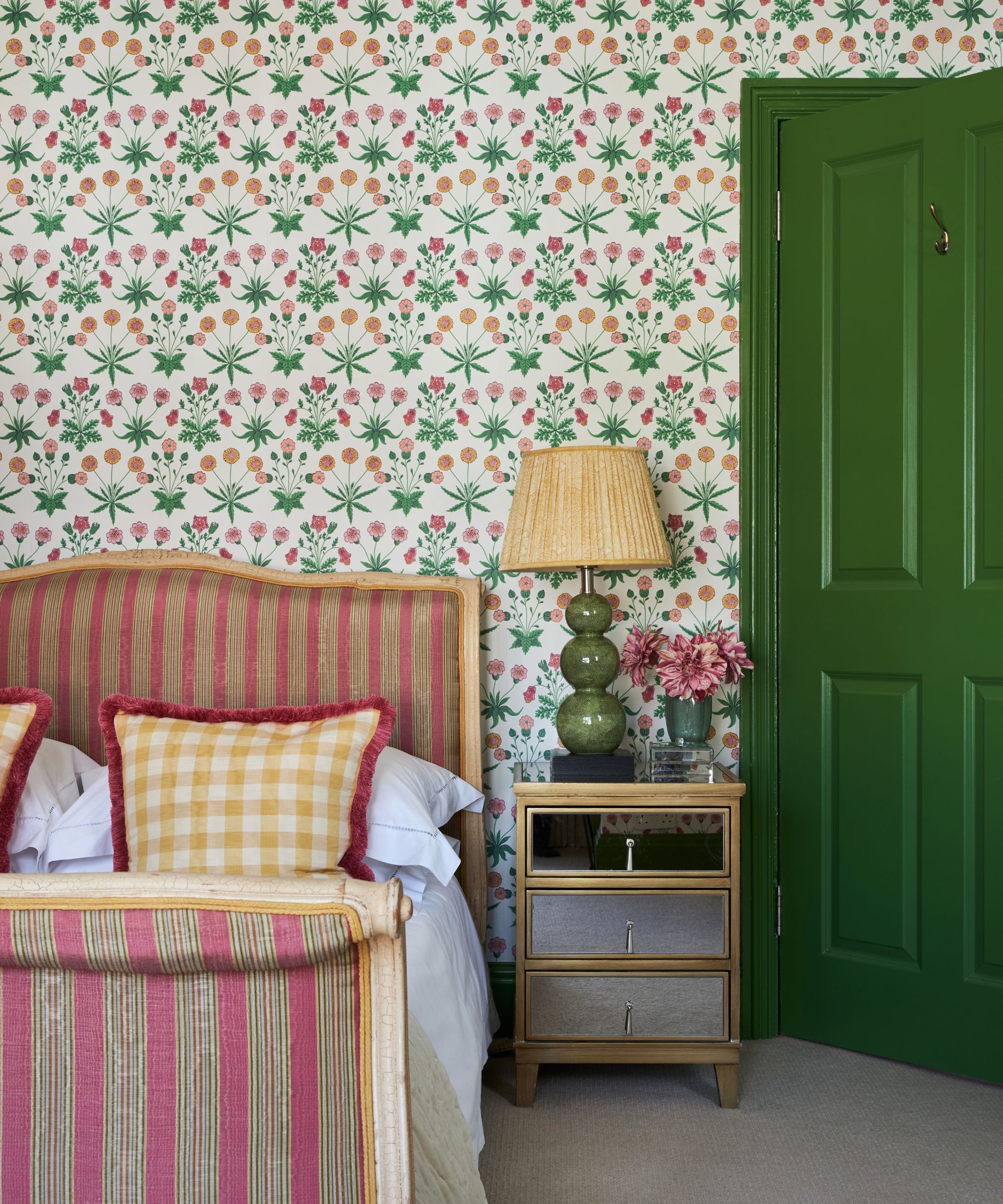
Characterised by their stylised flora and fauna motifs, the ornate patterns of William Morris have witnessed a huge resurgence in recent years and are perfect for those looking to inject a little classic British style. Born in 1834, William Morris was a designer, poet, socialist and a pioneer of the Arts & Crafts Movement. Passionate about championing the beauty of the natural world and British craftsmanship in a time of increasing industrialisation, in 1861 Morris founded Morris, Marshall, Faulkner & Co (now known as Morris & Co) and, together with other eminent designers created hundreds of beautiful patterns for fabrics and wallpapers, many of which are still available to buy today. Iconic Arts & Crafts decor prints include Strawberry Thief, Willow Boughs and Pimpernel, which are loved by many interior designers for their timeless appeal.
In this beautiful bedroom, interior designer Laura Stephens chose the Morris & Co's Daisy wallpaper, one of William Morris' first designs created in 1864.
'For me, British design is all about layering color, pattern and heritage in a way that feels both timeless and personal. In this home, we chose a bold William Morris wallpaper for the master bedroom, not only for its rich design history, but for its ability to instantly ground the space,’ explains Laura Stephens. ‘Morris remains a go-to for many of my interior projects thanks to its enduring appeal; the patterns are both decorative and deeply rooted in British craft tradition, making them feel instantly familiar yet fresh in a modern context.’
6. Embrace heritage paint colors
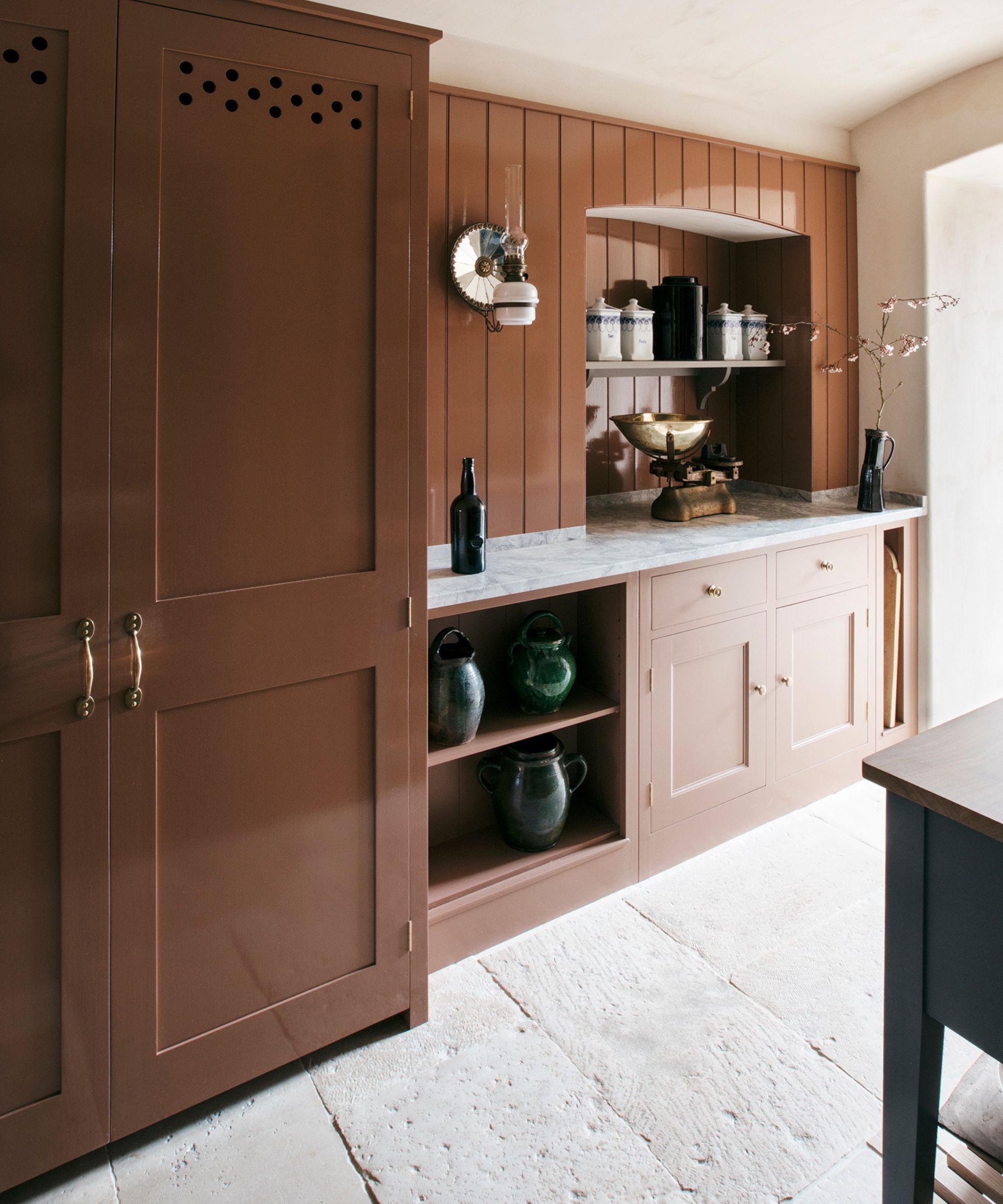
Decorating with heritage paint colors inspired by traditional formulations from the 18th and 19th centuries is a wonderful way to channel a classic British look. Colors based on natural earth and mineral pigments have a mellowness and a timeless quality that works beautifully with traditional British homes. In this project by Plain English, the designers chose warm earthy browns to complement the historic property and create a timeless ‘below the stairs’ look.
‘This is a project we designed and installed in an 18th-century folly. It was important that the kitchen and pantry area looked very much at home within the architecture of the building, referencing the downstairs joinery of great country houses,’ explains Merlin Wright, design director at Plain English. 'The colors chosen were at ease with the reclaimed, natural stone flooring as well as the spaces themselves. We chose colors from our Colour Collection No. II with ‘Kipper’ used on the tall cupboards and boarding, with ‘Mash’ used for the floor cupboards, because they were quietly comfortable within the space, creating the sense they had ‘always been there.’
7. The cottage look
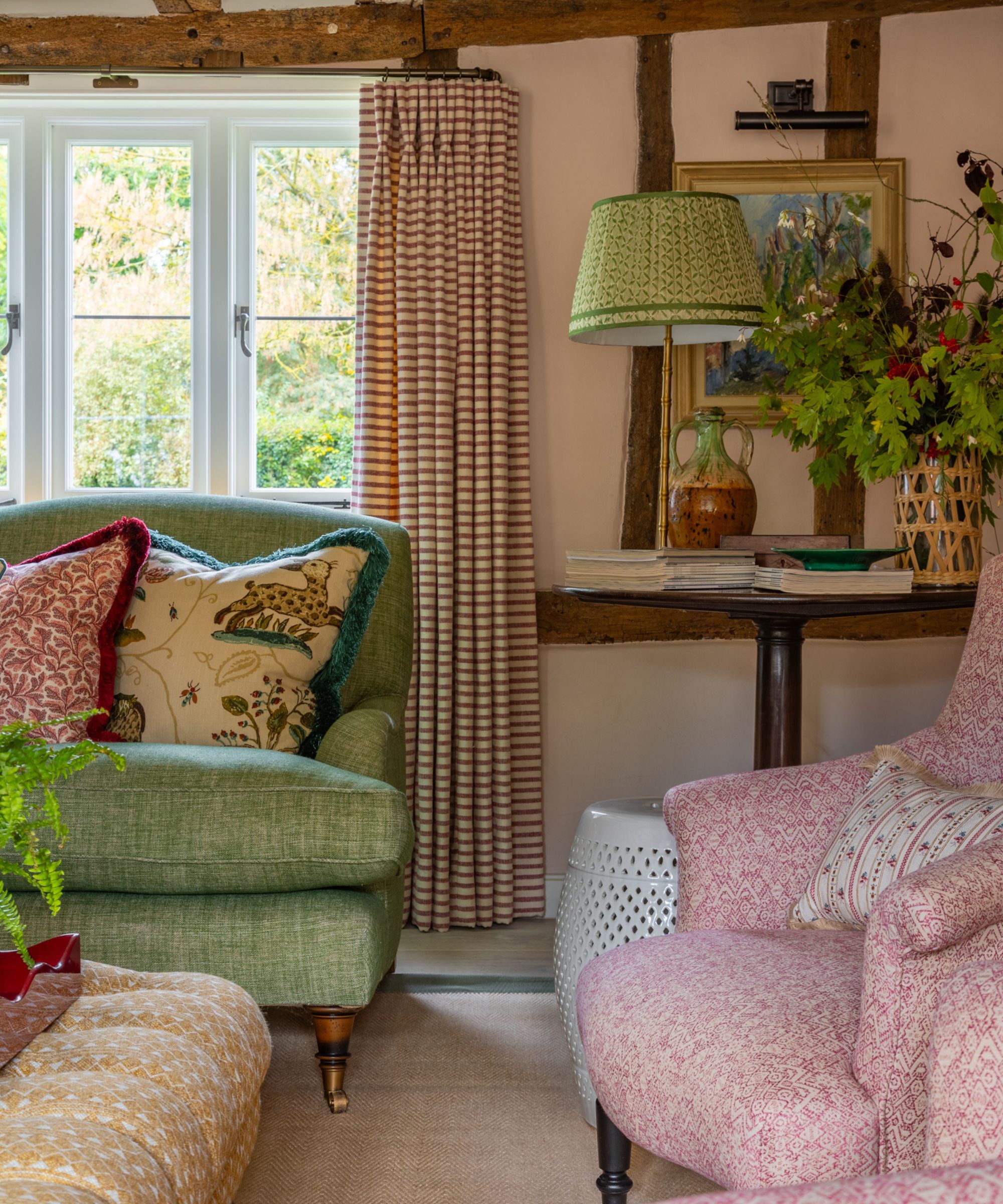
From the golden limestone cottages of the Cotswolds, to the stone bothies of the Scottish highlands, Great Britain boasts an array of picturesque cottages and their interiors are just as charming as their exteriors. Firmly rooted in their rural surroundings, classic British cottage decor is characterized by layers of fabrics, nature-inspired prints, natural materials and plenty of antiques.
‘For me, the most successful cottage interiors feel collected and layered with personality rather than decorated and styled to perfection. I love the interplay of characterful antique pieces with contemporary comforts, finding that perfect balance between history, individuality, and liveability,’ explains Sean Symington. ‘I’m naturally drawn to using fabrics in a thoughtful mix of patterns: botanical prints that echo the surrounding landscape, classic geometrics for structure, and ditsy prints that add charm without overpowering a space.’
‘Block printed linens are lovely in cottage settings. The handcrafted imperfections in block prints add character, while linen itself has that beautiful light quality. I find lighter fabrics feel more appropriate for a cottage than heavier options like velvets or thick damasks.’
8. Decorating with antiques
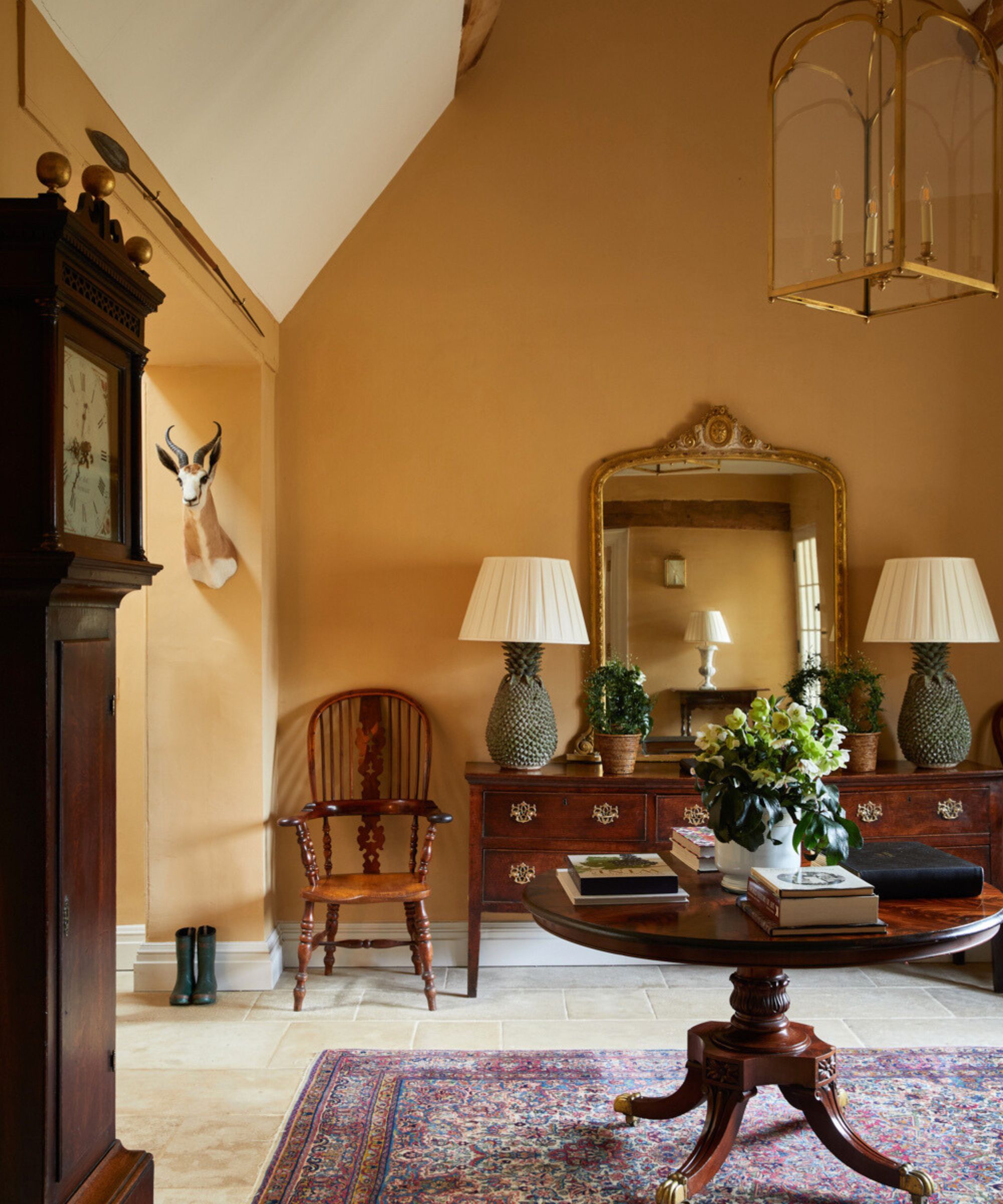
Many interior designers will attest that no classic British interior should be without antiques. Decorating with antiques of different ages and styles is a wonderful way to bring a unique character to a room, but it also helps create a relaxed feel and a sense that a space has evolved slowly over time.
Often avoided for fear of being dated, dark wood pieces are now having a revival, with interior designers now rediscovering them and using them in fresh new ways. Used collectively, they can create a look of classic country grandeur, as in this space by Octavia Dickinson. Alternatively, try pairing them with modern pieces as part of more contemporary, eclectic schemes.
‘Antiques are the backbone of classic British interiors; they bring a sense of permanence, character, and gentle eccentricity that’s so intrinsic to our style,’ says interior designer Octavia Dickinson. ‘In this Gloucestershire farmhouse entrance, each piece tells a story – from the Georgian grandfather clock to the Victorian sideboard and the Regency center table. The aim is never to create a museum, but to layer pieces with soul and history in a way that feels inviting and lived-in. It’s this thoughtful curation that makes British interiors feel timeless yet entirely personal.’
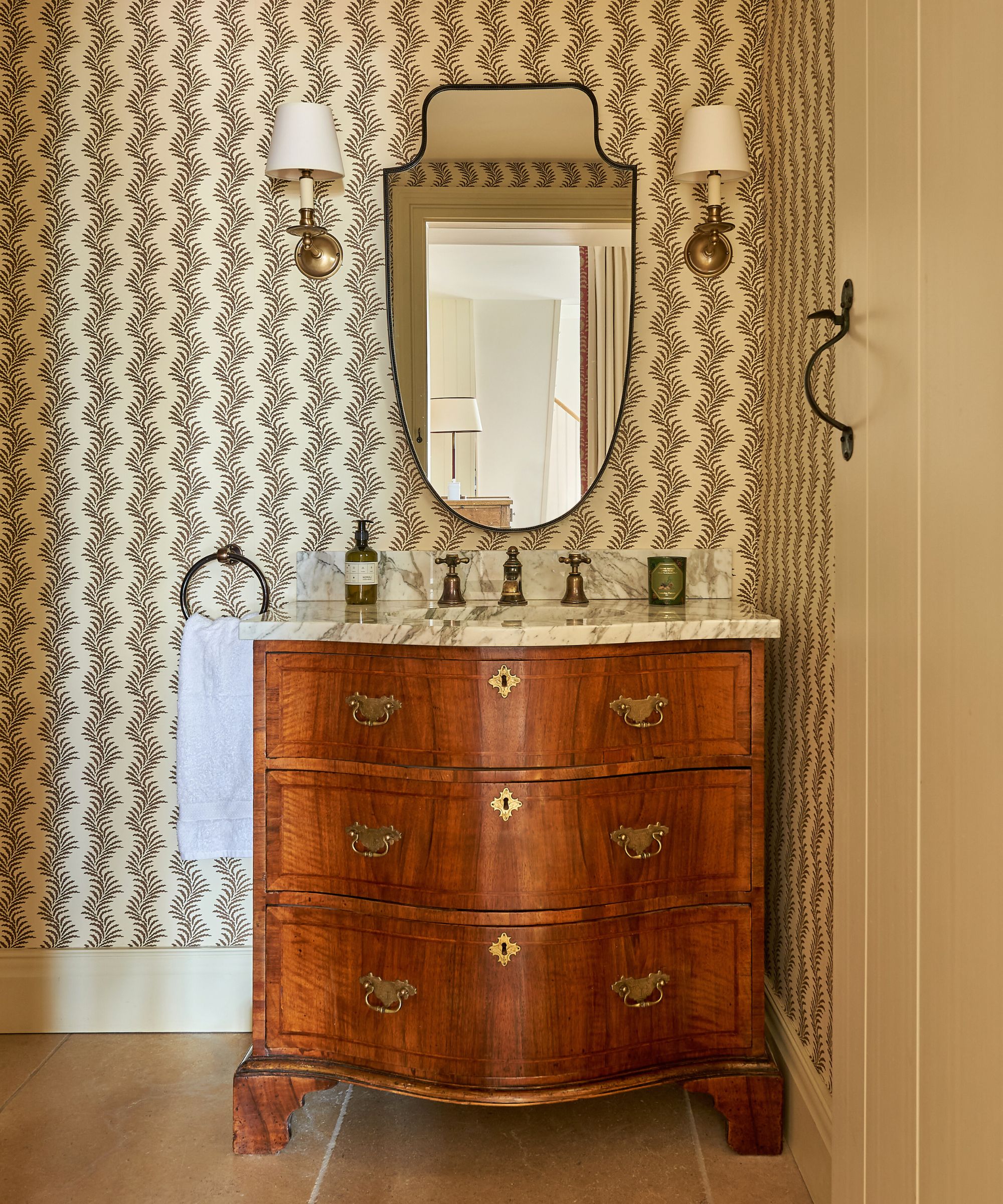
Interior designer Rosanna Bossom also loves incorporating antiques, and enjoys using them in unexpected ways. 'For this bathroom, we found a beautiful chest of drawers that complemented the tone of the Soane Scrolling Fern Frond wallpaper. By adding a marble basin, we elevated the room’s overall feel, transforming the chest into a functional yet impactful piece that’s used every day.’
9. The library aesthetic
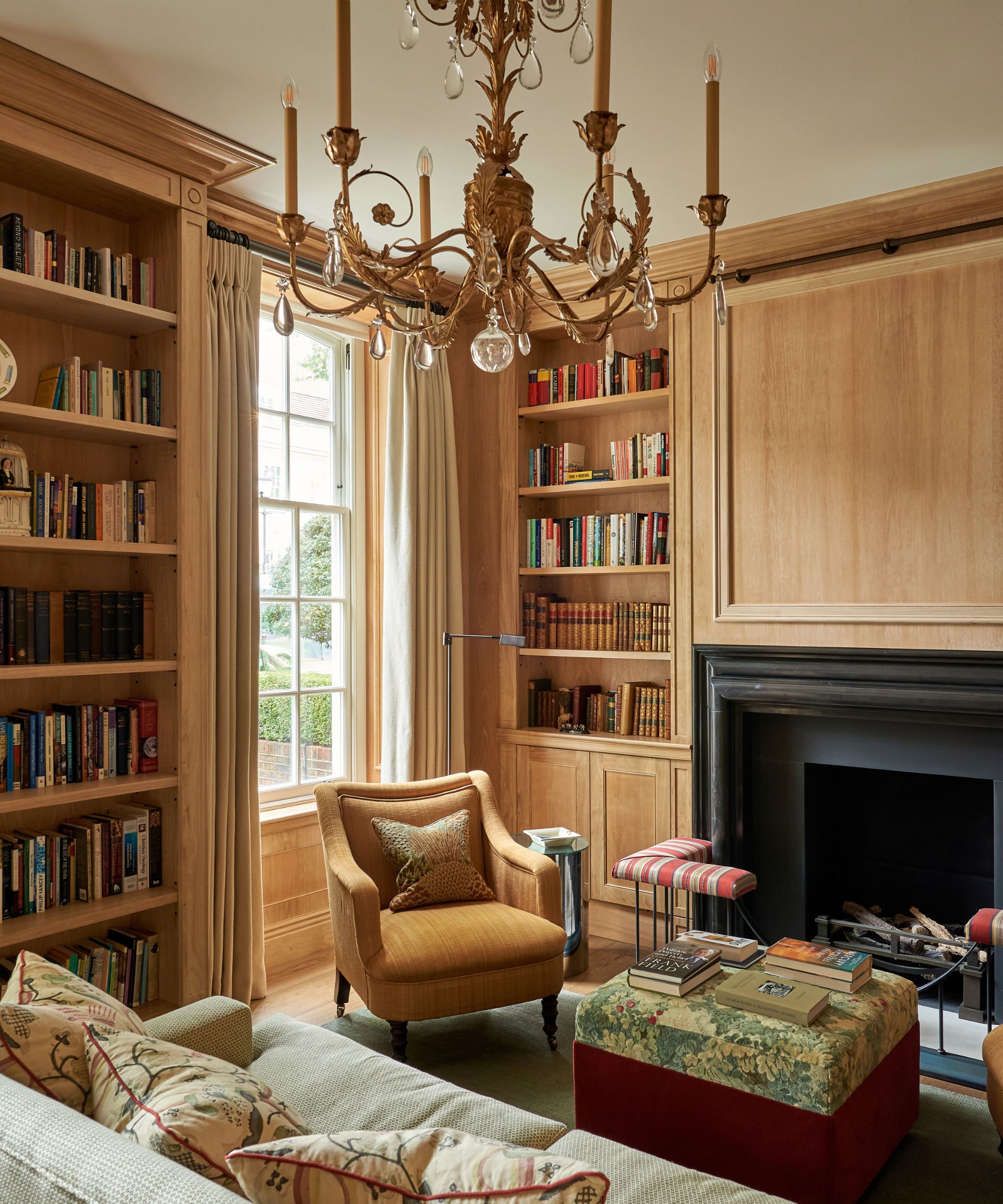
There's something about decorating with books that feels quintessentially British and so comforting and homely. Rooms with floor-to-ceiling bookshelves packed with antique books immediately conjure images of traditional country homes or the libraries of historic universities; they have a cocooning, comforting feel that beckons you to come in and curl up in an armchair.
'Our aim with the traditional joinery in this library was to evoke quintessentially British warmth and sophistication,' explains interior designer Rosanna Bossom. 'We sought to channel the elegance of English stately homes and academic institutions, incorporating bespoke shelving, towering bookcases, and intricately carved details. The refined craftsmanship, paired with classic paneling, creates a space that feels both intellectual and inviting, blending heritage with contemporary style.'
10. Butler's pantries
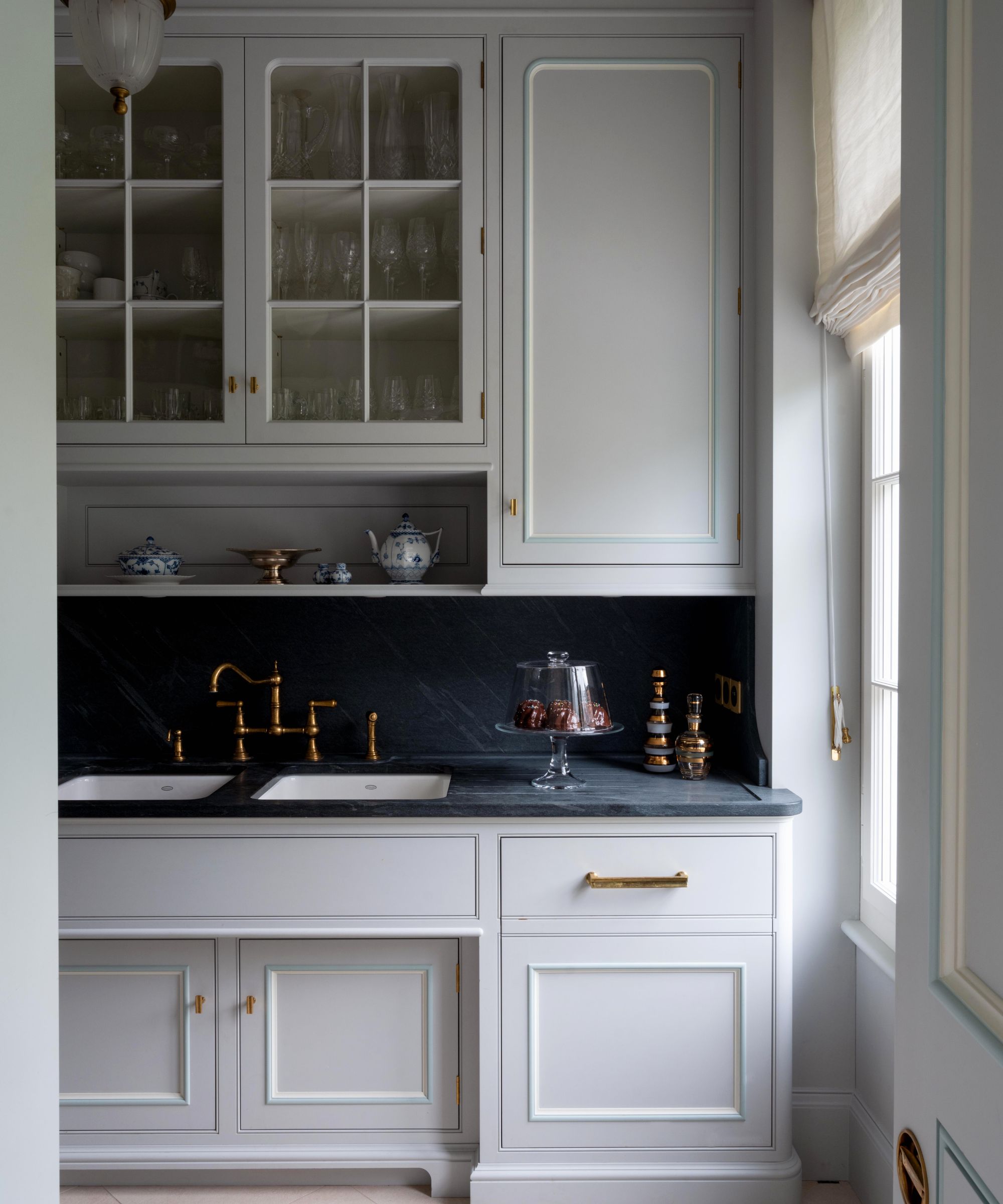
Historically, butler’s pantries were one of a number of service rooms located ‘below the stairs’ in large British houses. As the name suggests it was the place that housed everything butlers needed to carry out their tasks and often where the silver and glassware were stored. They also acted as a buffer between kitchen and dining areas and would be used to put the finishing touches to meals before serving, or for preparing desserts and cheese boards. The advent of the modern kitchens with electrical appliances saw these spaces decline in the mid-20th century; however, in more recent years these hardworking service areas have grown in popularity, with many kitchen companies turning to historic examples for inspiration.
‘We are often invited to create “a family” or main kitchen as the most significant room of the house which is then supported by a professional working kitchen as well as back of house rooms such as a pantry or scullery,’ says Bruce Hodgson, founder of Artichoke.
‘Over decades Artichoke has built up unprecedented historical knowledge and skill in designing "back of house" rooms. The main kitchen is often supported by a butler’s pantry, scullery, galley kitchen or even a cold storage room. These secondary "shut-off” spaces are especially useful for entertaining and help with the seamless flow and elegant running of the household. Frequently, they are set apart by traditional glazed joinery partitions for flow and light, they offer space for food preparation, additional storage and appliances as well as clearing and general overflow.’
11. Textural tapestry
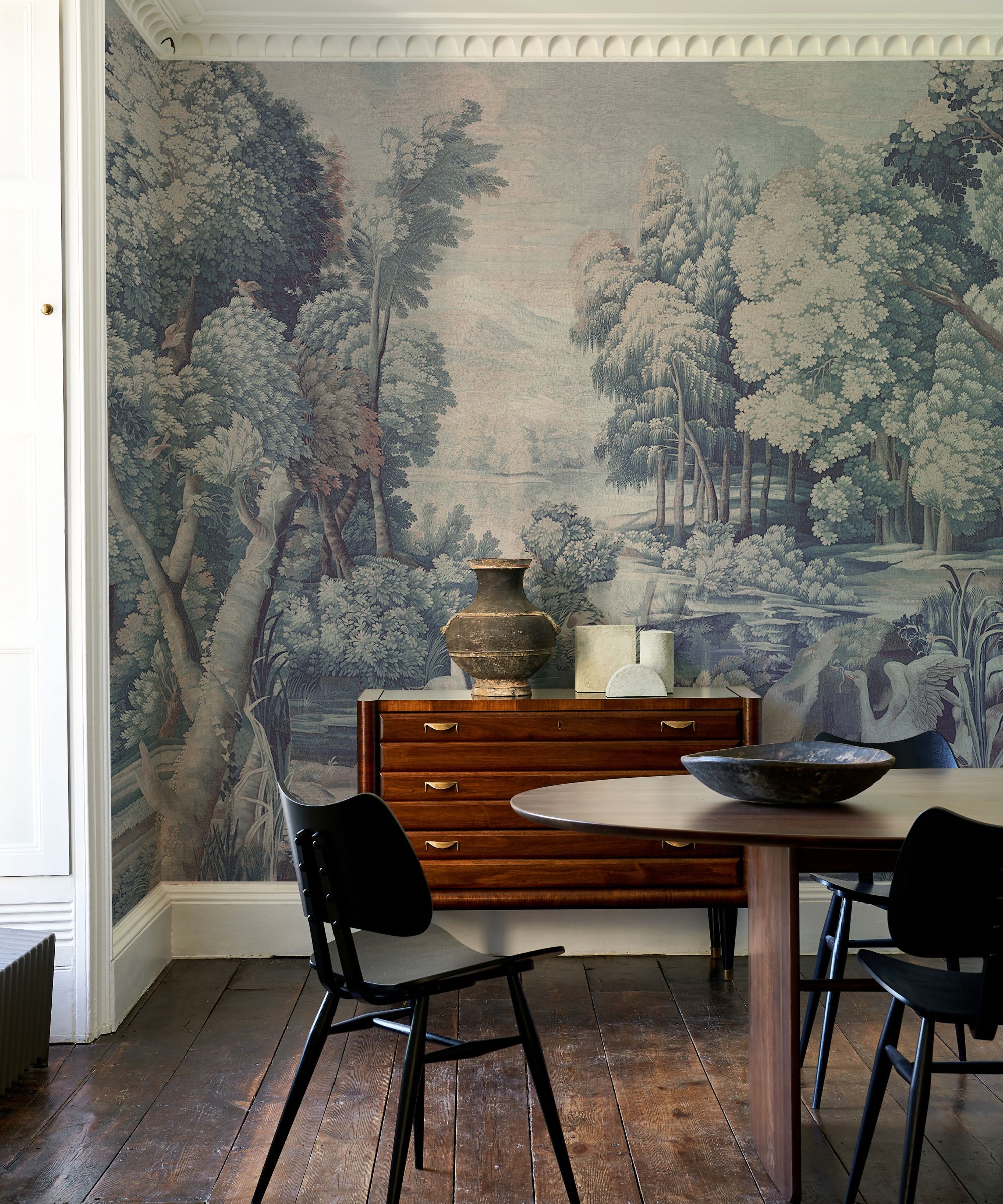
Ornate woven tapestries were a popular form of wall decoration in grand historic British homes of the 16th, 17th and 18th centuries, often used to denote wealth and social standing, and today it seems they’re making a comeback. Alongside sourcing antique tapestries for their projects, interior designers are turning to modern wallpapers inspired by tapestry designs to bring a touch of elegance and grandeur to modern interiors.
‘In recent months we have seen an increased interest in our tapestry wall hangings and wallpapers,’ explains PJ Keeling, founder of Zardi & Zardi. ‘Tapestries were once the preserve of the wealthy, and we hope to bring these beautiful designs onto the walls of the modern interior for everyone to enjoy.’
Sign up to the Homes & Gardens newsletter
Design expertise in your inbox – from inspiring decorating ideas and beautiful celebrity homes to practical gardening advice and shopping round-ups.

Pippa is a contributor to Homes & Gardens. A graduate of Art History and formerly Style Editor at Period Living, she is passionate about architecture, creating decorating content, interior styling and writing about craft and historic homes. She enjoys searching out beautiful images and the latest trends to share with the Homes & Gardens audience. A keen gardener, when she’s not writing, you’ll find her growing flowers on her yard for styling projects.
You must confirm your public display name before commenting
Please logout and then login again, you will then be prompted to enter your display name.
-
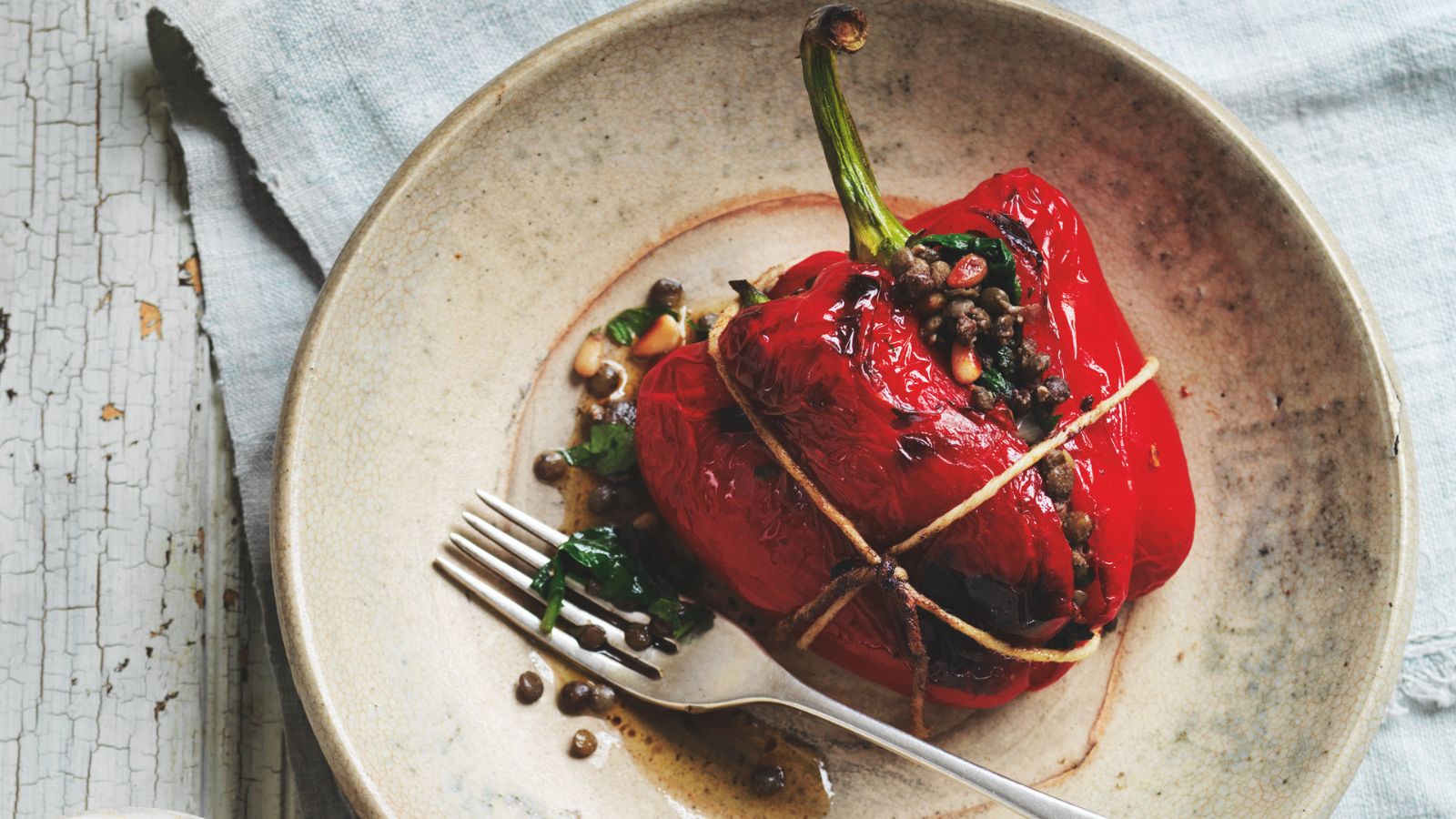 Stuffed peppers just got a bold upgrade with this harissa yogurt recipe
Stuffed peppers just got a bold upgrade with this harissa yogurt recipeVegetarians often have to settle for salads at barbecues. This stuffed pepper recipe has all the crunch, and makes a satisfying main course, too
-
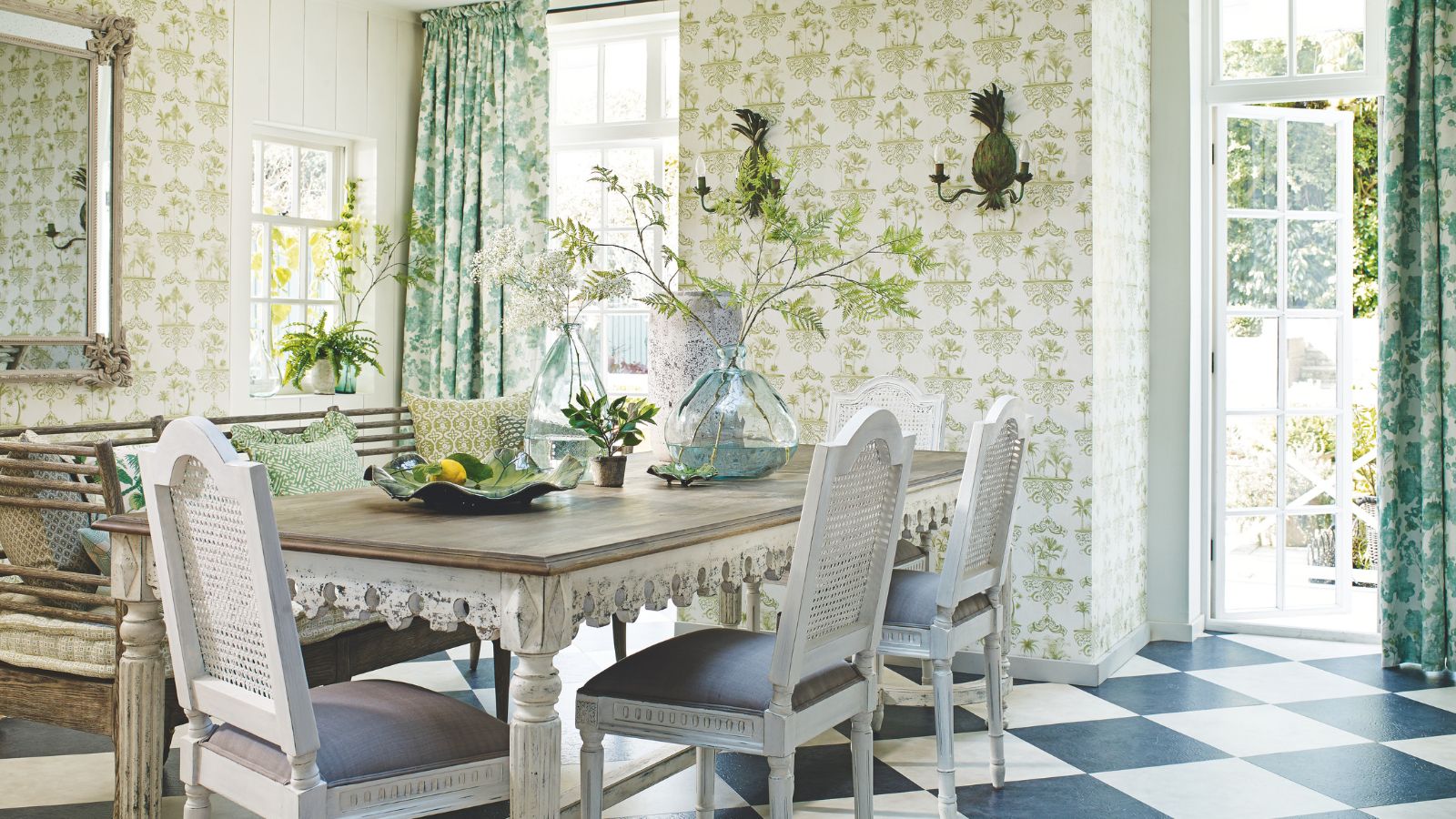 Bug bombs 101 – what are they, how to use them, and the must-know safety measures to keep in mind
Bug bombs 101 – what are they, how to use them, and the must-know safety measures to keep in mindI'm a pest control expert, and this is my ultimate bug bomb guide